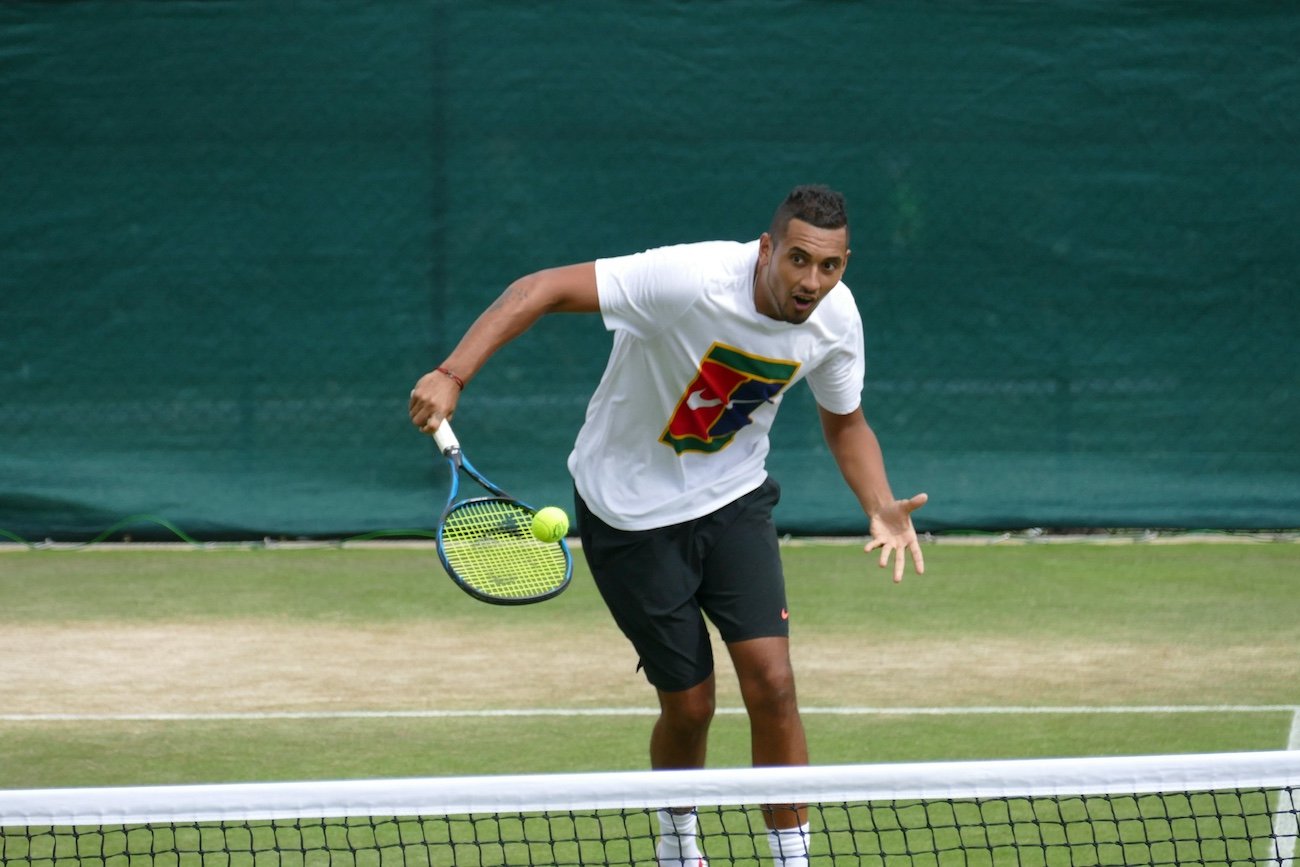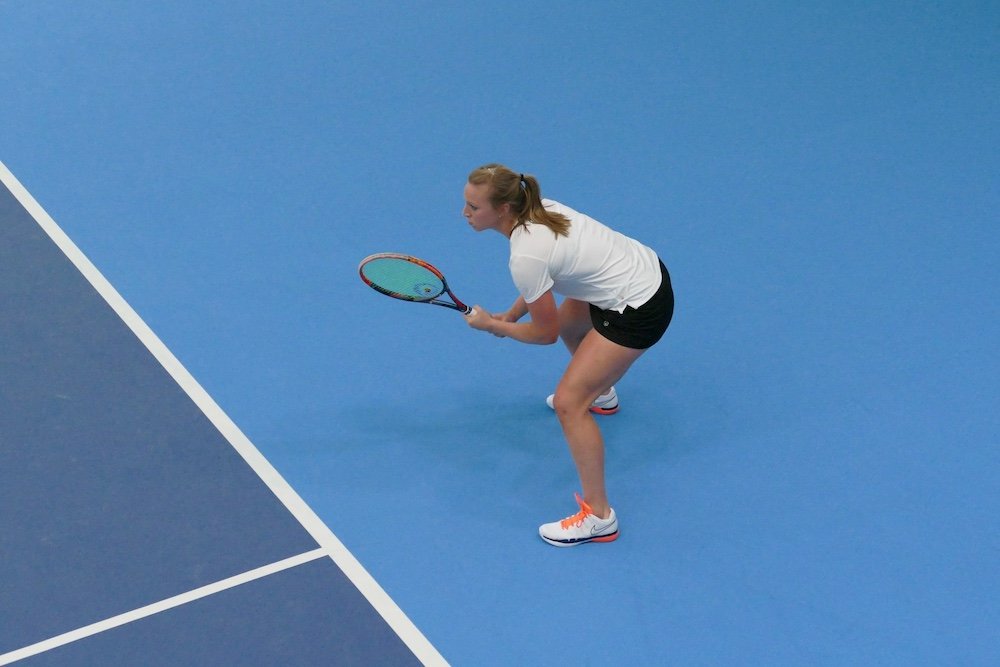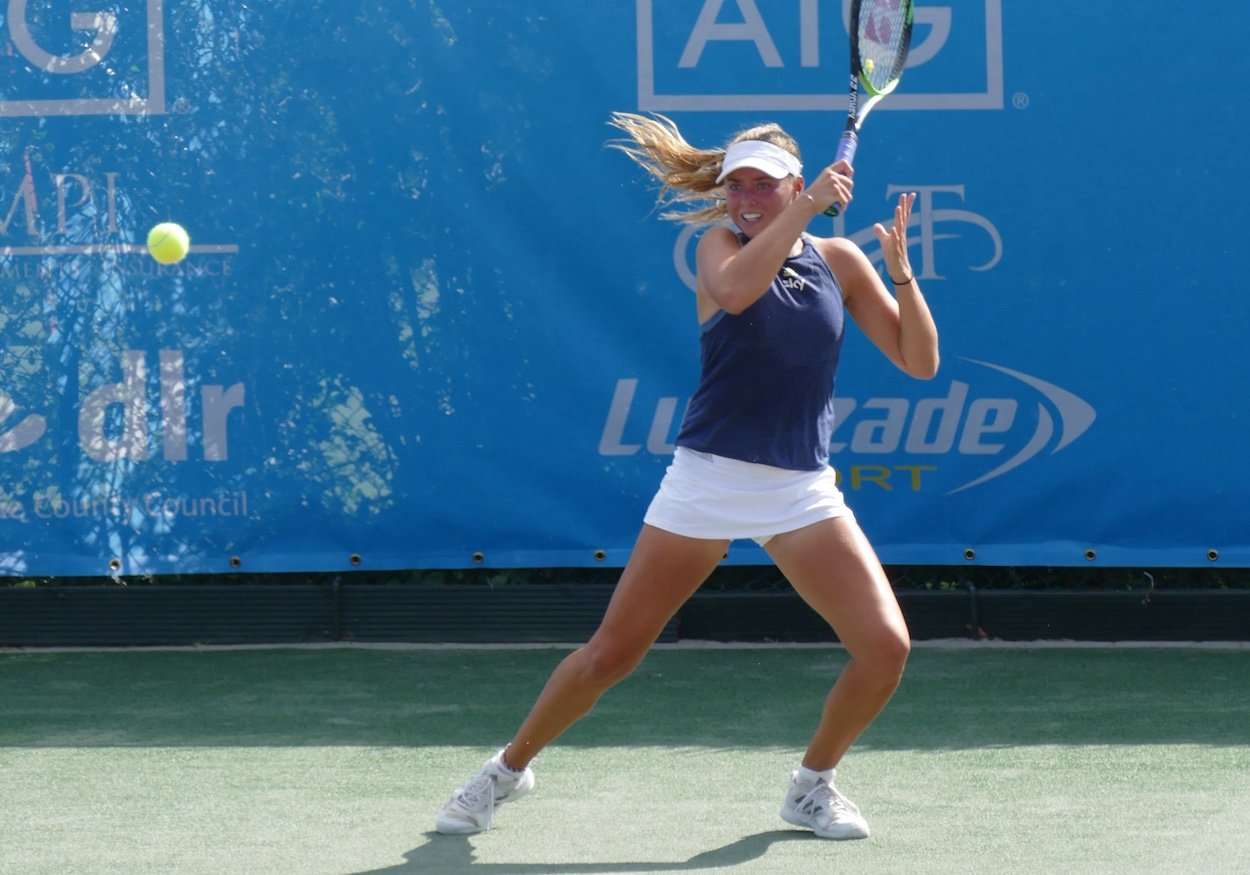Tennis Unlocked:
A series of articles written by Peter, designed to build into a library of knowledge specifically designed for club-level players, that can help make your match play more effective.

Attack the Short Ball.
Tennis can seem quite a complex game. Ever wonder if there is a simple formula you can use, in every match, to give you a better chance of winning?
Good news—there is:
Keep your groundstrokes deep until your opponent hits a short ball that bounces in or around your service box. When they hit short, step in and attack, hitting an approach shot, a drop shot or an outright winner.
What Does This Mean?
A short ball is an opportunity to attack, because you are closer to your opponent’s court. Angles open up and the opponent has less time to react to your shot.
What Does This Mean For Your Tennis?
We could talk a lot about when and how to play each of the three shots mentioned above. But the bottom line is - condition yourself to automatically move forward as a short ball approaches, then choose and implement one of the three options.
You now have a simple “go to” plan that gives you a great chance of winning any point.

A Deep Dive Into Why You Might Make Errors on the Court…
When you miss a shot, do you often blame your technique – “my grip was wrong, my backswing was too late, my footwork was off…?
While it’s true that ‘technical errors’ cause mistakes, it’s important to remember that technique is not always to blame.
When we take an action, we use the Perception, Decision, Execution, Feedback loop.
What Does This Mean?
An example - you are watching TV:
YOUR PERCEPTION - this programme is boring.
YOUR DECISION - I’ll change channels.
YOUR EXECUTION - press the remote-control button.
YOUR FEEDBACK - this programme is much better.
The same process occurs with tennis shots, for example:
YOUR PERCEPTION - My opponent is approaching the net,
YOUR DECISION - I must finish the rally on this shot - I’ll hit down the line as hard as I can, to make sure of a winner.
YOUR EXECUTION - playing the stroke.
YOUR FEEDBACK – I played the right shot, the wrong shot, I hit it too high, I needed more spin etc.
What Does This Mean For Your Tennis?
YOUR DECISION: When you miss a shot, instead of immediately blaming your technique, look a little deeper: often the root cause of an error is a poor DECISION. It may have been a situation that did not really allow you to end the point with your next shot, for example your opponent’s approach shot was a very good one. A better decision might have been to hit crosscourt at three-quarter pace, emphasizing keeping the ball low.
YOUR EXECUTION - Yes, it is possible that the error was here - e.g. late contact on the shot causing it to land wide.
YOUR FEEDBACK - If the feedback you provide to yourself is flawed, it may cause you to make poor decisions later in the match.

Tennis: A Game of Sending AND Receiving
Tennis players often focus primarily on the type of shot they want to hit or ‘send’. They don’t consider the incoming shot – the ball ‘received’. This can be a major source of errors.
What Does This Mean?
Tennis is a game of both receiving and sending the ball – NOT JUST SENDING.
Every incoming ball approaches with a certain amount of pace and spin, at a certain height, and to a certain place. Each of these characteristics of the approaching ball need to be factored in for you to make the best decision as to what your response should be. Only then can you choose the shot most likely to succeed.
EXAMPLE: your opponent has hit a fast and well-placed first serve. You are tempted to drill it down the line with pace for a clean winner. However, given the characteristics of the incoming ball, you would be much more likely to be successful with the return if you focus on getting it back deep at a medium pace.
What Does This Mean For Your Tennis?
Ask yourself what your opponent’s shot ALLOWS you to do, before you decide WHAT to do. You will make fewer errors. That puts pressure on your opponent by making her feel she needs to play even better shots to force you to miss.

Recovery – A Vital Element in the Shot Cycle.
A frequent issue I see among club-level players is neglecting to RECOVER – the final stage of the ‘shot cycle’.
What Does This Mean?
Each shot has a four step ‘cycle’, and you must finish the cycle before that shot is complete. For each incoming ball, the cycle looks like this:
1. You are in the ready position, at the best possible spot on the court, waiting for your opponent to play their shot.
2. As your opponent contacts the ball, split step in order to get an explosive start toward where you will contact the ball.
3. Get your body into position and execute the stroke.
4. RECOVER – the circle only closes when you are back at the start - in the ready position, at the best possible spot on the court, waiting for the opponent to play their shot.
What Does This Mean For Your Tennis?
Put simply, if you
· do not recover
· Recover too slowly
· Recover to the wrong place*
you may struggle to cope effectively with your opponent’s next shot.

Tennis is the ultimate ‘OPEN SPORT’.
What Does This Mean?
All sports can be classified on a scale that runs from closed to open.
EXAMPLE 1: When a gymnast performs her routine on the beam:
· she has no opponent trying to influence the process.
· She does the exact routine as practiced many times.
· She does not have to make any decisions.
· She knows how long she will perform for.
· The environment – an indoor hall - remains relatively constant.
This means that we are talking about a closed sport.
EXAMPLE 2: When you play a tennis match:
· your opponent is trying to make things difficult for you.
· You cannot have practiced exactly what you will do in the match.
· You have to make several decisions on each shot – in a very limited time.
· You do not know how long the match will last.
· The environment can change – different weather conditions in the same match, various court surfaces in different matches.
This means that we are talking about an open sport.
What Does This Mean For Your Tennis?
In tennis, you never play two shots in exactly the same way. The ball arrives from a different place than before, to a different spot on your end, at a different height, with less or more power and spin than previously. You reply with a shot that is different from your previous shots.
So, when you go on the practice court, prioritise exercises that mimic what happens in a match. Emphasise ‘live rallying’, where the balls coming at you have lots of variation. In this type of exercise you decide what to do, then implement your decision, rather than receiving a predetermined shot and sending it to a predetermined target.
